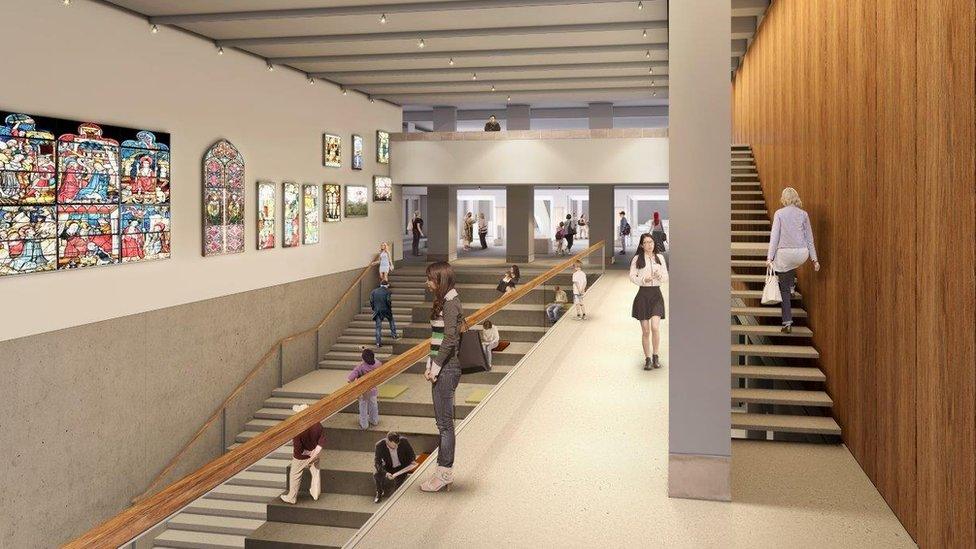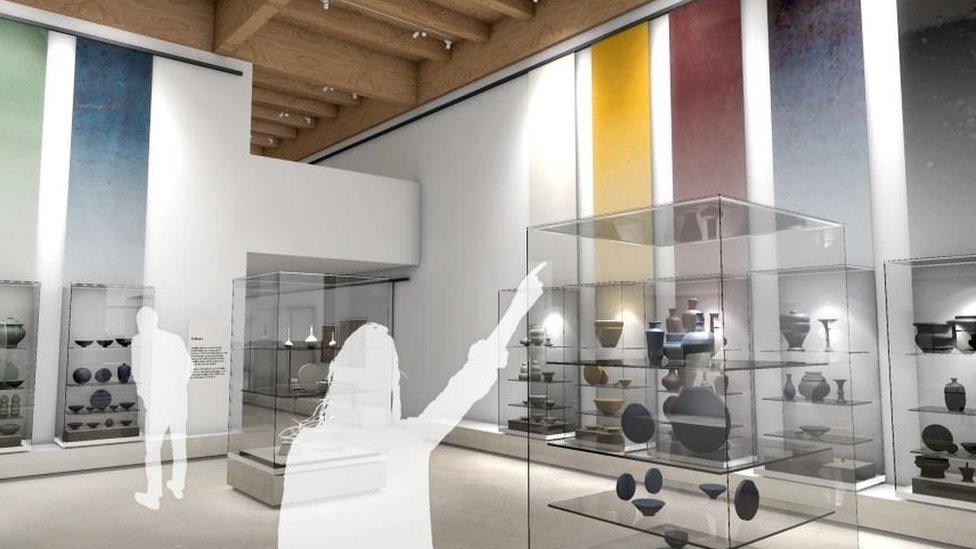Funding boost for Burrell Collection revamp
- Published

An impression of the planned new central access area
The project to refurbish Glasgow's Burrell Collection museum has been boosted after four supporters pledged a total of £1.4m in funding.
More than 94% of the projected £66m cost of the work has now been raised.
The A-listed building in Pollok Park has been closed since late 2016 for a revamp which will expand display space and improve visitor facilities.
Kier Construction Scotland has been named preferred bidder to deliver the main building contract.
The latest donations come from The Wolfson Foundation and The Headley Trust which each pledged £500,000.
The Gannochy Trust has pledged £250,000 and The Taylor Family Foundation has pledged £150,000.
The collection was built up by the shipping merchant and philanthropist Sir William Burrell and donated to Glasgow in 1944. It is now managed by Glasgow Life on behalf of Glasgow City Council.
It comprises almost 9,000 items ranging from ancient prehistoric artefacts and Chinese ceramics to works by Impressionists such as Manet and Degas.

The revamp should allow more items to go on display
Glasgow City Council has agreed to pay up to 50% of the cost of the refurbishment. The Scottish government has pledged £5m while £15m is coming from lottery funding.
David McDonald, chairman of Glasgow Life, said: "The refurbishment of the Burrell Collection will unlock the great potential of Sir William's incredible gift to the city and the appointment of Kier Construction as the main contractor is a significant milestone.
"We are protecting and enhancing the Collection for the current and future generations - and creating a home for these treasures which, in its location at the heart of Pollok Country Park, is nothing short of exceptional."
The museum is expected to re-open in 2020 and some of the collection is on display at Kelvingrove Museum in the meantime.